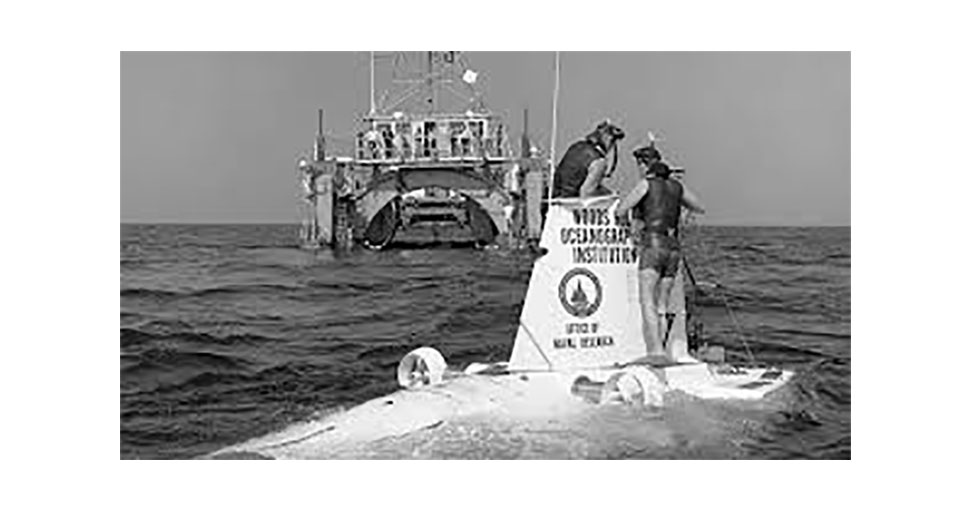January 6, 2020 - Founded on this day in 1930 to help advance the role of the United States in worldwide oceanographic research, Woods Hole Oceanographic Institution (WHOI) has grown from a summer laboratory to a year-round global research operation with more than 1,000 oceanographers, engineers, students, and support staff. As they celebrate their 90th anniversary, here’s a look back at just some of the significant achievements the Institution has made over the past nine decades.
1930s
- Articles of incorporation are filed in January, the board names Henry Bigelow director, and he initiates laboratory- and ship-building plans with funding from the Rockefeller Foundation
- Cooperative work with the U.S. Navy begins with investigations of the “afternoon effect” on sound in seawater
1940s
- WHOI becomes a year-round institution, with research almost wholly devoted to the war effort.
- Atlantis moves to a lake mooring in Louisiana for safekeeping while a variety of large and small vessels work out of the Woods Hole boat basin on WHOI projects
1950s
- “Iceberg” Smith becomes director and scientists persevere despite postwar adjustments and financial uncertainty caused by wartime inflation
- Paul Fye begins his 18-year term as director and Chain brings big-ship oceanography to Woods Hole
1960s
- Delivery of the deep submersible Alvin offers new capabilities for ocean research
- WHOI and MIT agree to establish a joint graduate degree program and the Institution purchases the Quissett Campus
1970s
- Knorr arrives in Woods Hole and the International Decade of Ocean Exploration begins
- WHOI scientists discover the world’s first known active hydrothermal vents during Alvin dives along the Galápagos Rift, a discovery that fundamentally changed our understanding of life on Earth
1980s
- Construction of McLean Laboratory for geosciences is followed by the addition of Coastal Research Laboratory and Fye Laboratory for chemistry and geochemistry
- Discovery of the sunken Titanic during a Knorr expedition shines an international spotlight on Woods Hole
1990s
- The first autonomous vehicle debuts, working from Atlantis II to map the seafloor on the Juan de Fuca ridge
- A new Atlantis joins the flee
2000s
- The new coastal vessel Tioga provides rapid access to coastal research sites.
- Two new laboratory buildings are under construction on the Quissett Campus
2010s
- The 238-foot-long (72.5 m) R/V Neil Armstrong, which was named in 2014 for the first man to walk on the moon, arrives at WHOI where it is met by an audience of invited guests that included members of Armstrong's family and a space station commander
- Massachusetts Institute of Technology/Woods Hole Oceanographic Institution (WHOI) Joint Program conferred its 1000th degree
Story by WHOI, check out the original story here





